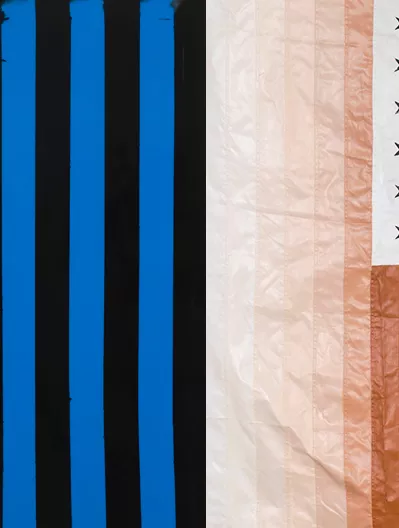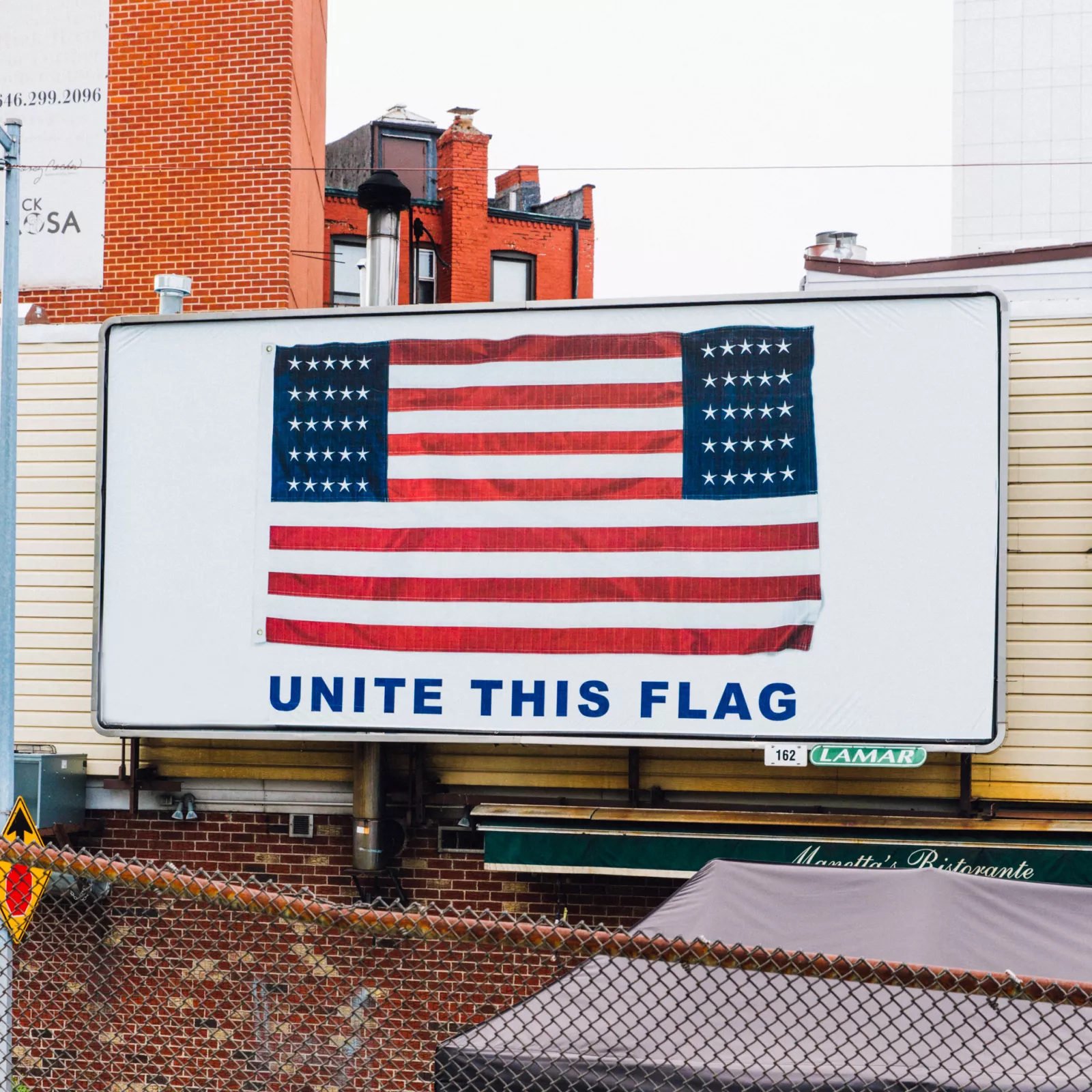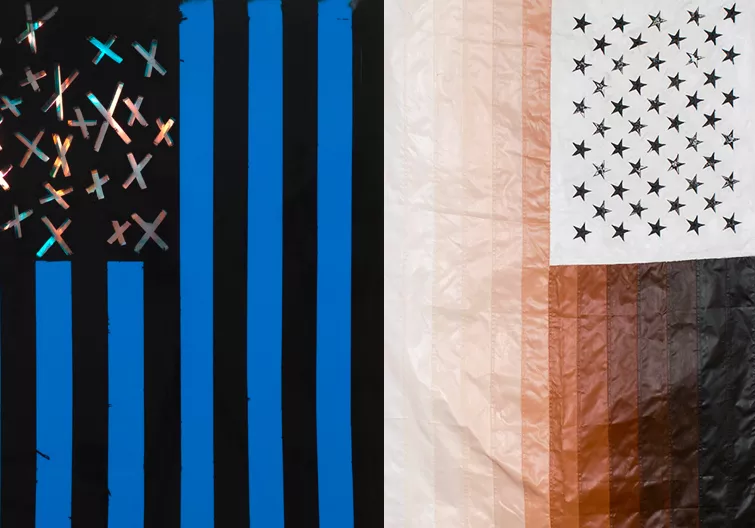Contested Legacies and National Identity in 'For Which It Stands,' an Exhibition by Emily Alesandrini

For Which it Stands, a new exhibition co-curated by Emily Alesandrini (graduate student in the Department of History of Art) is underway in both physical and online formats with support from the Ford Foundation Gallery and Assembly Room in New York.
The exhibition includes the work of more than 35 contemporary artists who explore the convoluted history and legacy of exclusion associated with the American flag. Using the American flag as their medium, these artists address today’s volatile political climate to explore injustice in American society to re-center national identity and healing. Emily’s curation of For Which it Stands continues her work as an advocate for social justice and reform in the U.S. Emily co-curated this exhibition with Assembly Room New York co-founder Natasha Becker and Eileen Jeng Lynch, Curator of Visual Arts at Wave Hill Cultural Center in the Bronx.
Each week the exhibition features new engagements with artists and curators through conversations, initiatives, and performances. Click here to see the latest programming.
In the Q&A, Emily Alesandrini talks about For Which it Stands and her career as a curator before joining the Bryn Mawr College community.
2020 has been a year where the U.S. has reached a breaking point. The murder of George Floyd, new national platforms for white nationalism, and the devastating effects of the coronavirus epidemic have coalesced in a way that has challenged American society to act for social change. For Which it Stands voices the nation's pain through the works of these 35 artists, yet with optimism for America's national identity in the 21st century. Could you talk a little about the exhibition, its artists, and some of the social themes it draws out?
For Which It Stands is an evolving curatorial initiative featuring contemporary artists who use the iconic American flag, loaded with centuries of convoluted history and exclusion, to create new symbols of national identity. Amid a highly volatile political climate and rise in white nationalism, these participating artists assert their place and affirm the multiplicity of the American experience while addressing issues of police brutality, systemic racism, socioeconomic disparities, alternative facts, and a patriarchal society, among others. In this time of such complex and crucial political consequence, we’re really aiming to hold space for conversation and personal expression with the ultimate goal of political empowerment and action.You bring years of professional experience to the Bryn Mawr College graduate community as a curator, activist, and writer, and have staged exhibitions across the nation, most recently geographically located in New York City. What brought you together with Natasha Becker and Eileen Jeng Lynch, co-curators of For Which it Stands? How did this project form and evolve?
Last year I completed a curatorial project with Assembly Room—a fantastic collective for independent, women-identifying curators. Assembly Room was co-founded by Natasha, and I had long been an admirer of her curatorial practice. Prior to that experience, I worked with Eileen as her curatorial fellow at a contemporary arts center in the Bronx. All three of us had been thinking about these various political and social issues as they related to the numerous flag artworks we were seeing in studios, galleries, and on Instagram. The partnership was a natural fit, and it’s been a wonderful collaboration. Though we had been planning an in-person exhibition, the effects of COVID-19 postponed the realization of a physical show. Still wanting to spotlight this work and promote these conversations in the current political moment, we pivoted our exhibition vision and have been staging conversations, performances, artist talks, and studio visits online, mostly through Zoom and Instagram Live.
The exhibition includes both virtual and physical components that will rotate through 2022. Could you talk a little about some of the events?
On Nov. 11 I spoke with artist Sandy Williams IV on his wax flag work currently on view at Socrates Sculpture Park. In addition to talking about his practice and this particular flag piece, we discussed the evolving role of monuments in our national landscape and the relationship between public art, memory, and political engagement. Throughout the next month, we’ll also be dropping a new video by artist Carla Edwards and hosting talks with artists Abigail DeVille and Saya Woolfalk, among other events. Look out for installations by Nari Ward and Jeffery Gibson, as well. All of our previous talks and programs (with artists such as Mel Chin, Tariku Shiferaw, June Edmonds, and Tajh Rust, among others) can be viewed on our website and Instagram page.


